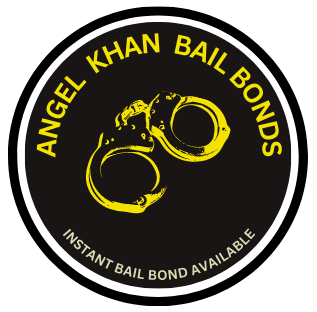Implementing effective micro-influencer campaigns at the local level requires a nuanced, data-driven approach that goes far beyond surface-level tactics. This guide provides an in-depth, actionable framework to help brands identify the right influencers, craft compelling outreach strategies, and scale campaigns for sustainable growth. We will explore each step with practical techniques, real-world examples, and expert insights, ensuring that you can execute campaigns with confidence and precision.
- Selecting the Right Micro-Influencers for Local Brand Campaigns
- Crafting a Targeted Micro-Influencer Outreach Strategy
- Designing Campaign Content and Messaging for Local Impact
- Implementing Tracking and Measuring Campaign Effectiveness
- Managing Campaign Execution and Ensuring Quality Control
- Optimizing and Scaling Micro-Influencer Campaigns for Local Growth
- Case Study: Step-by-Step Implementation of a Micro-Influencer Campaign
- Final Tips: Ensuring Authenticity and Maximizing Local Engagement
1. Selecting the Right Micro-Influencers for Local Brand Campaigns
a) Criteria for Identifying Authentic and Relevant Micro-Influencers
Start by defining your local audience’s demographics, interests, and cultural nuances. Use qualitative criteria such as:
- Authenticity: Influencers whose content aligns naturally with your brand values and show genuine enthusiasm for local issues.
- Relevance: Content niches that match your product or service offerings, such as local food bloggers for a restaurant or neighborhood lifestyle creators for community events.
- Audience Overlap: Ensure their followers are within your target geographic and demographic segments.
Use a combination of manual review and data-driven filters to shortlist candidates, avoiding influencers with inflated follower counts but low engagement or fake followers.
b) Tools and Platforms for Micro-Influencer Discovery
Leverage specialized platforms like Upfluence and Heepsy that enable geo-filtered searches, audience demographics, and authenticity metrics. Here’s a step-by-step approach:
- Define your search parameters: location, niche, follower count (e.g., 1,000–10,000 for micro-influencers).
- Filter by engagement: look for influencers with engagement rates above 3-6%—a strong indicator of active, interested audiences.
- Assess audience quality: review audience demographics and engagement patterns to avoid fake followers.
c) Evaluating Engagement Rates and Audience Quality Over Follower Count
Follower count is a vanity metric. Prioritize engagement metrics:
| Metric | Why It Matters |
|---|---|
| Engagement Rate | Indicates audience interest and content resonance. |
| Audience Authenticity | Verified through comments, shares, and follower demographics. |
Use tools like Followerwonk or HypeAuditor to analyze audience authenticity and engagement patterns comprehensively.
d) Conducting Background Checks and Content Authenticity Verification
Verify influencer credibility through:
- Content Consistency: Review their recent posts for quality, tone, and alignment with your brand.
- History of Collaborations: Check previous brand partnerships for professionalism and authenticity.
- Manual Verification: Engage with their content—look for genuine reactions, user comments, and community involvement.
- Use of Tools: Platforms like Brandwatch can help detect fake followers or suspicious engagement spikes.
2. Crafting a Targeted Micro-Influencer Outreach Strategy
a) Personalizing Outreach Messages to Foster Genuine Relationships
Avoid generic templates. Instead, craft personalized messages that demonstrate you’ve researched their content. For example:
Template Example:
“Hi [Influencer Name], I’ve been following your local food adventures in [City], especially your recent post about [Specific Post]. We’re launching a new organic bakery in the neighborhood and believe your authentic voice could beautifully highlight our story. Would love to discuss a collaboration that benefits both of us.”
Key tips:
- Reference specific posts or themes to show genuine interest.
- Align your brand’s story with their content style and audience interests.
- Maintain a friendly, professional tone that invites dialogue.
b) Structuring Collaboration Proposals with Clear Expectations and Deliverables
Design detailed briefs that cover:
| Component | Details |
|---|---|
| Content Type | Posts, Stories, Reels, Live sessions |
| Themes | Local landmarks, community stories, product usage |
| Schedule | Specific dates and times aligned with local events |
| Metrics & Reporting | Engagement goals, hashtag use, tagging |
Set expectations upfront and include contingencies for content revisions and approvals.
c) Setting Incentives: Compensation, Free Products, or Affiliate Opportunities
Balance budget constraints with influencer motivation:
- Monetary Compensation: Offer fair payments based on content scope and influence level (e.g., $50–$200 per post).
- Free Products or Services: Provide exclusive access or samples that incentivize authentic reviews.
- Affiliate Links & Commissions: Set up unique codes or links that generate ongoing revenue sharing, fostering long-term partnerships.
d) Timing and Follow-up Tactics to Maximize Response Rates
Strategically plan outreach:
- Initial Outreach: Send personalized messages during weekdays, ideally mornings when influencers are more active.
- Follow-up Timing: Wait 3–5 days before a gentle reminder, emphasizing your genuine interest.
- Use Multiple Channels: Combine DMs, emails, and engagement with their content to build familiarity.
3. Designing Campaign Content and Messaging for Local Impact
a) Co-Creating Content Ideas that Highlight Local Relevance
Engage influencers in brainstorming sessions to develop content that resonates locally. Techniques include:
- Local Storytelling: Share personal narratives about local landmarks or traditions.
- Event Tie-ins: Coordinate content around community festivals or seasonal happenings.
- Product Integration: Demonstrate how your product fits into local lifestyles or routines.
Use collaborative tools like Miro or Notion to document ideas and gather feedback iteratively.
b) Incorporating Local Culture, Events, and Landmarks into Content
Authenticity hinges on local relevance. Provide influencers with:
- Visual Assets: High-quality photos of local landmarks, event graphics, or neighborhood scenes.
- Storytelling Angles: Tips on weaving local history or community stories into captions.
- Hashtags & Geotags: Curated local hashtags and geotagging to boost visibility within the community.
c) Providing Creative Content Guidelines and Brand Voice Parameters
Clarity ensures consistency:
- Tone & Voice: Friendly, community-oriented, authentic.
- Visual Style: Use brand-approved colors, fonts, and logo placements where appropriate.
- Content Do’s and Don’ts: Avoid over-polished or overly commercial content; emphasize storytelling and genuine experience.
d) Ensuring Content Diversity: Stories, Posts, Reels, and Live Sessions
Diversify content formats to maximize engagement:
- Instagram Stories & Highlights: Behind-the-scenes or quick local tips.
- Posts & Carousels: Visual narratives showcasing local scenes or customer stories.
- Reels & Short Videos: Fun, engaging clips linking your brand to local culture.
- Live Sessions: Q&A, local event coverage, or live product demos.
4. Implementing Tracking and Measuring Campaign Effectiveness
a) Using Unique Discount Codes or Affiliate Links for Attribution
Assign each influencer a unique code or link to track conversions:
- Codes: e.g., LOCAL10 for 10% off, shared exclusively through influencer content.
- Affiliate Links: Use UTM parameters like
?ref=InfluencerNameembedded in links.
Tools like Bitly can help shorten and monitor link performance.
b) Monitoring Engagement Metrics Specific to Local Audience

